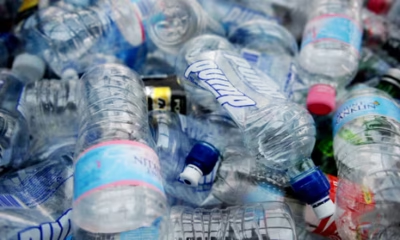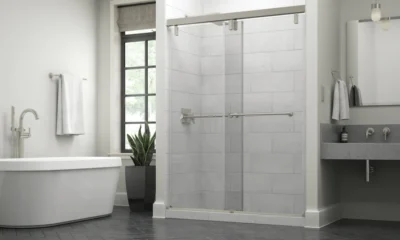Business
Carton Packaging Design: The Ideal Branding Medium
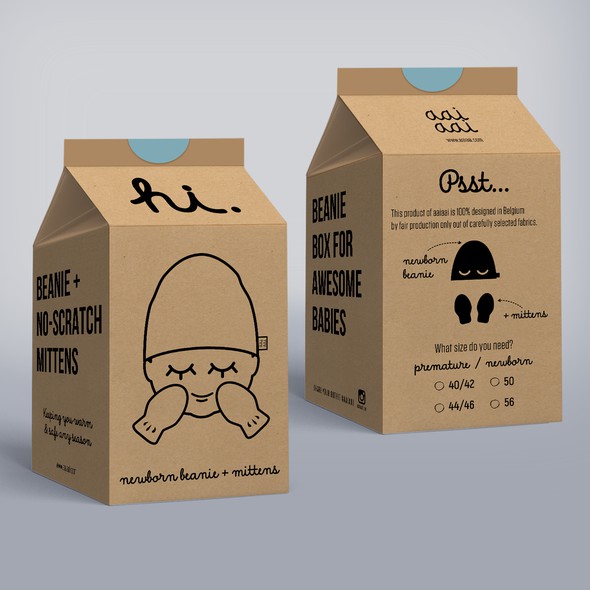
Your packaging’s design says a lot about your product and brand. In this competitive age, everyone wants to keep ahead of the competition, and packaging is a tool that has been very useful for a long time.
Having luxurious and exquisite packaging is an easy method to capture the attention of your potential customers. You get two functions in one, medium to keep your things secure and advertise them.
It is past time to recognise that the packaging industry is dynamic and now solely accepts originality. It has become multidimensional and provides the consumer with a holistic experience.
Let’s take a look at some carton packaging ideas that will help you stand out in the market.
What is the definition of Carton Packaging Design?
Packaging design is frequently used when a firm wants to create an eye-catching, memorable product that will stick out on store shelves.
That is why major brands such as Apple, Chanel, and others invest heavily in creating secure yet appealing packaging. Although designing is not difficult, graphic designers and package engineers are the finest selections for your carton box packaging.
Create Stunning Product Packaging
You should examine the desired effect a package will have on its audience. Is it, for example, designed to be appealing? Are you attempting to make your goods appear more elegant or of higher quality than competitors? What message are you expressing with this particular packaging, and how do those messages relate to who is purchasing the most?
You cannot disregard the material and must decide whether your brand needs conventional cardboard boxes or rigid premium boxes.
3 Important Considerations for Carton Box Packaging Design
When creating your boxes, you must consider three factors: graphic design, physical packaging, and marketing of your products.
It’s a surefire way to have the most appealing boxes for your brand. Each one defines your concept in a distinct and consistent manner. You must understand these points in order to develop an effective design concept.
Attract Customers with Unique Graphic Design
What is on the outside of a package is just as essential to designers as it is to buyers. Graphic designers understand that it is not enough for an object to be well-designed; it must also look good from every angle when seen in person or through photographs on the internet.
The most effective technique to capture a customer’s attention is to use a design that conveys a concept about the organisation and its values. Customers will grasp what the product stands for and how it can benefit them if these aspects are incorporated into packaging graphics.
Make an impression with one-of-a-kind designs.
We must now consider the packaging’s design constraints. The primary function of packaging is to safeguard the goods. Consider all of the constraints and create something that works within those constraints.
Designers frequently seek inspiration and ideas from their competitors in the marketplace. With competition increasing, it is critical to always give your best effort.
Looking into how other designers approach packaging design might be beneficial when starting out because they have already discovered a winning formula that others may not be able to compete with any time soon.
The most critical aspect is that your packaging is able to exist. You can have the most insane design ideas, but if you don’t know how to make them happen or what resources are required, just use ordinary paper carton packaging and develop from there.
Packaging Design Makes Marketing Simple
The next point to consider is how to sell your goods through packaging design. Your packaging design could mean the difference between a product that sells like hotcakes and one that no one wants.
Good packaging can attract clients from long distances, convince them to buy your items even if they are more expensive than competitors’ offers, and eventually result in more earnings for you.
The key to good packaging is to combine form, construction, materials, and colour with other design components such as product images or text.
To put it simply, your design must establish the customer’s personality, promote your product’s USP, and develop a distinct identity in a crowded market.
Make Your Packaging Emotional
Because most individuals are averse to buying something without being emotionally impacted beforehand, creativity may be a great tool when advertising new things, but how do you create these emotions? The packaging alone has been demonstrated to elicit a wide range of emotions among customers.
Standing out in a crowded market requires more than just having something that appears different. You need an eye-catching design, shape, or colour so that people notice you from a distance and develop a relationship with your brand.
3 Packaging Design Suggestions
The packaging of your products is the most critical marketing decision you will make. Your package design choice should represent what is inside, who it is intended to appeal to, and how they will utilise it.
Let’s have a look at a few pointers to keep in mind when creating your packaging:
1: Select an Outstanding Logo
Your logo is an important component of your packaging design. It may be a simple black-and-white silhouette in a plain box, or it could cover practically the entire surface area with brilliant colours.
That is why it is critical to keep this in mind when you develop something unique for each product line.
Consider a design that covers all of your core and outside surfaces. However, whichever option you choose, keep the logo in mind throughout the process.
Remember to utilise high-quality vector files to avoid pixelation issues later on.
2: Display Your Logo in Custom Boxes
It is critical to evaluate the colours you use for your brand. You want the colour of your logo and other marketing materials to correspond with the values and aims of your firm.
Because colours speak directly to our sentiments and memories, they help customers recognise brands more quickly than anything else in marketing campaigns.
To ensure a consistent branding experience, keep the same colour palette in your store, on all of your products, and even on packaging.
3: Make Use of a Lavish Typeface
People’s perceptions of your work will be influenced by the typeface you employ for your website or trademarked merchandise. If people can’t read what you’ve written, there may be little use in marketing yourself at all.
You may wish to select a specific typeface for any USPs printed on your product packaging to maximise its attention-grabbing effectiveness.
Knowing the proper weight for text, as well as letter spacing, will help you build distinctive and creative fonts.
4: Further Illustration
You may not have realised it, but certain emblems or symbols signify things manufactured in your country. These small details may help tie a design together and demonstrate what the product is all about, especially if you don’t know much about it beforehand.
Design Concepts for Product Packaging
When it comes to high-quality product packaging design, there are a few things to keep in mind.
To begin, the graphic should be eye-catching and bold. It is critical not just for your products but also for customers perusing aisles, as they may otherwise pass them by.
We share a vast range of packaging types, each of which is unique in its own way:
Sources for Innovative Packaging
Creative packaging is a theme that has recently come to the forefront of design. Companies are experimenting with new ways to package their products, and some have already been successful.
You must demonstrate your brand’s innovation in a way that distinguishes it from the competition. When constructing packaging for your products, make sure to use a novel design so that people can notice how creative you are while browsing.
Giving your old packing material a new purpose might help you be more creative in saving money for another project or just extending the life of the material.
Choose a Minimalistic Design for Your Custom Packaging
Minimalist logos are frequently distinguished by their simplicity and lack of detail. These criteria, however, may not necessarily apply to well-known symbols or companies, as demonstrated by Apple’s distinctive apple image.
When it comes to brand design, less is sometimes more. Minimalism works for almost every business and may be accomplished with a few basic supplies, such as cardboard boxes or markers.
Your Packaging Can Help You Recreate Vintage Looks
Vintage clothing is having a trendy comeback. Many brands are embracing the trend and infusing vintage characteristics into their work.
It might be tough to keep up with cultural trends in today’s fast-paced society. Fortunately, there are people who understand how to advance in the company while engaging on emotional levels at every turn, such as the designer of vintage-style design.
It provides the impression that your company has been in business for decades and understands how to keep its clients satisfied. The antique presentation is most commonly seen with edible products.
Use Patterns to Establish a Strong Market Presence
According to science, our brain is wired to detect repeated patterns. Pattern recognition is a powerful yet underappreciated type of brain function.
Because the human mind becomes connected to what it sees for no apparent reason, applying pattern recognition in packaging designs makes sense.
Patterns are designs that incorporate recurring components such as shapes, colours, and lines. They often have symbolic value in some cultures, but their impact extends beyond symbolism because they are continually interpreted by humans all around us.
Dieline: If you want to save time and money on package design, try employing a conventional box dieline. This will make it easy for printers or illustrators to print them.
One technique to make your packaging look more professional is to design on a box dieline. It is simpler to design high-resolution product boxes that can be simply printed and manufactured to ensure optimal quality.
Dielines are an excellent package design template because they allow you to showcase your packaging before it is even opened.
Designs for Modern Packaging
What is the definition of modern? It’s a difficult concept to define because it varies depending on who you ask. Some characterise it as something happening today, while others describe it as something hot now and then.
Using an image or shape across many sides of the product container is a popular packaging design strategy these days, which can help your things stand out more simply and establish a consistent brand identity.
This design exemplifies how to make the most of little space. On one side, the images are more complex and bright, whereas, on the other, the colours are employed for label tags with information instead.
To summarise
The beauty of effective packaging design comes in its function and how well it grabs our attention while we browse in stores or online.
Packaging design has gotten more inventive over time; it can no longer be limited to boxes and bags. If a designer wants his product to reach people emotionally, he must use many superior materials: consider shapes, colours, and textures.
Business
Is Commercial Litigation the Same as Corporate Litigation?

In the legal world, terminology matters. Businesses often encounter various disputes that require legal intervention, but understanding the distinction between different types of litigation can be confusing. Two terms that are frequently used interchangeably—but are not exactly the same—are commercial litigation and corporate litigation.
While both types of litigation deal with business-related matters, they differ in focus, scope, and the kinds of legal issues they address. This article aims to demystify the difference between commercial and corporate litigation, explain how they overlap, and highlight when legal help is necessary.
Understanding Commercial Litigation
Commercial litigation broadly refers to legal disputes that arise out of business and commercial relationships. These disputes usually involve issues related to transactions, contracts, and business operations. The parties involved can be individuals, partnerships, corporations, or government entities.
Common Types of Commercial Litigation
- Breach of Contract – One of the most common commercial litigation cases. When one party fails to fulfill the terms of a business agreement, the other party may sue for damages or enforcement.
- Shareholder Disputes – While this overlaps with corporate litigation, shareholder disputes that focus on contractual rights or monetary interests can fall under commercial litigation.
- Franchise Disputes – Franchisors and franchisees may enter litigation over operational issues, territory rights, or termination clauses.
- Real Estate Disputes – Commercial leases, zoning, and property development issues are often litigated under commercial law.
- Trade Secrets and IP Infringement – Protection of proprietary business information can lead to commercial disputes.
- Debt Collection and Enforcement – Businesses may litigate to recover unpaid debts or enforce payment terms.
In essence, commercial litigation is transactional in nature. It involves disputes over business activities, often hinging on financial matters and contractual obligations.
Understanding Corporate Litigation
Corporate litigation, on the other hand, refers to legal disputes that arise from the internal governance of a corporation. These disputes are often focused on the rights, duties, and conduct of those involved in managing and owning a company.
Common Types of Corporate Litigation
- Breach of Fiduciary Duty – Corporate officers and directors have a duty to act in the best interests of the company. Allegations of misconduct, self-dealing, or negligence often fall under corporate litigation.
- Minority Shareholder Oppression – Minority shareholders who believe they’ve been unfairly treated may initiate legal action under corporate law provisions.
- Derivative Actions – Shareholders may sue directors or officers on behalf of the company for wrongdoing that affects the business.
- Corporate Governance Disputes – Issues related to board elections, bylaw interpretations, or compliance with governance rules.
- Mergers and Acquisitions Disputes – Litigation that arises from failed or contested M&A transactions, including due diligence issues or breaches of representation.
Corporate litigation is internal in nature, focusing on how a company is run rather than how it transacts with the outside world.
Key Differences Between Commercial and Corporate Litigation
While both commercial and corporate litigation involve business entities, they address different aspects of business law.
| Feature | Commercial Litigation | Corporate Litigation |
| Nature of Dispute | External, transactional | Internal, governance-related |
| Common Issues | Contracts, payments, trade disputes | Fiduciary duties, shareholder rights, governance |
| Parties Involved | Businesses, individuals, third parties | Directors, officers, shareholders |
| Objective | Resolve transaction conflicts | Ensure lawful and fair corporate management |
Understanding these differences can help businesses approach legal issues more strategically and know what type of legal support is needed.
How They Overlap
Despite their distinctions, commercial and corporate litigation often overlap. For example:
- A shareholder dispute could involve both corporate governance (corporate litigation) and breach of a shareholder agreement (commercial litigation).
- An acquisition dispute may involve elements of misrepresentation (commercial) and board member misconduct (corporate).
- A partnership breakup may require resolving operational issues (commercial) and internal power struggles (corporate).
Law firms that specialize in business law are usually well-equipped to handle both types of litigation due to this crossover.
When Should You Seek Legal Counsel?
If you’re involved in a business dispute and aren’t sure whether it falls under commercial or corporate litigation, it’s best to consult a legal expert. Delaying legal intervention can worsen the situation or limit your options.
Consider consulting a lawyer if:
- You’re entering or exiting a high-value contract.
- You suspect a business partner is violating agreement terms.
- You’re a shareholder being left out of major decisions.
- The board of directors is acting against the best interest of the company.
- Your company is involved in a merger or acquisition gone wrong.
Skilled business lawyers can help assess your situation, identify the correct legal strategy, and represent your interests in court or negotiation.
The Legal Process
Both commercial and corporate litigation can be resolved through:
- Negotiation – Out-of-court settlements to avoid litigation.
- Mediation or Arbitration – Alternative dispute resolution methods.
- Litigation – Taking the dispute to court if resolution fails.
The process involves gathering evidence, filing pleadings, discovery, possible pre-trial motions, and ultimately, trial or settlement. The complexity and duration of the case depend on the issue, the willingness to negotiate, and the legal strategy involved.
Importance of Choosing the Right Legal Team
Given the stakes in business-related disputes—financial loss, reputational harm, and operational disruption—choosing an experienced law firm is critical. Firms that handle both commercial and corporate litigation are well-positioned to offer comprehensive legal support.
A trusted firm like Whitten and Lublin brings a wealth of experience in both commercial and corporate legal matters, offering tailored strategies and sharp representation to protect business interests.
Final Thoughts
So, is commercial litigation the same as corporate litigation?
Not exactly.
While both deal with legal issues in the business world, commercial litigation focuses on external business relationships and transactions, while corporate litigation is rooted in the internal workings and governance of a company.
Understanding the distinction helps businesses make informed decisions when legal challenges arise. Whether it’s a contractual dispute with a vendor or a boardroom battle over fiduciary duties, identifying the nature of the dispute is the first step in securing the right legal support.
If you’re facing any kind of business dispute, it’s always a wise move to consult legal experts who understand the nuances of both commercial and corporate law to ensure your rights and interests are fully protected.
Business
How Jack Truong Improves Companies by Uncovering Hidden Consumer Demands

What distinguishes truly effective business leaders from their peers? For Jack Truong, whose career spans groundbreaking engineering achievements to corporate turnarounds at 3M, Electrolux, and James Hardie, the secret lies in a deceptively simple question: What do consumers need that they’re not currently getting?
Starting with Consumer Pain Points Instead of Product Features
The traditional product development approach often begins with existing technologies or company capabilities. Truong flips this script entirely.
“I was exposed to various divisions in my first two years at 3M, and I really had to learn and understand what the unmet needs were in those industries, and come up with inventions that deliver innovative solutions for those particular sectors,” Truong explained in a Construction Today interview.
This consumer-first approach yielded substantial results. During his early career at 3M, Truong developed 11 patents, including innovations that would become household staples. His work with the Post-it Note franchise demonstrates this methodology perfectly. While many viewed paper notes as increasingly obsolete in a digital world, Truong recognized that people still needed visual reminders—just in more versatile applications than traditional products offered.
By creating adhesives that would work on vertical surfaces and adapting the product for new use cases, Truong revitalized what could have been a declining product line. The solution emerged not from technological capabilities but from careful observation of how consumers actually used the product and what limitations they faced.
Challenging Conventional Wisdom About Market Saturation
When Truong became president and CEO of Electrolux North America in 2011, he encountered a common corporate fallacy—the belief that a “mature market” offered limited growth potential.
“Back in 2011, when I joined, [Electrolux] was about a $4.2 billion business,” he told CEO Magazine. “The company saw North America as a mature market and didn’t expect any growth. In fact, when I took over, the company wasn’t growing and profit was declining.”
Rather than accepting this perspective, Truong delivered a wake-up call to the global leadership team: “There’s no such thing as a mature market, there’s only mature business managers.”
His subsequent strategy demonstrated the truth behind this assertion. While competitors focused on technological features, Truong’s market research revealed significant consumer segments that valued design aesthetics, simplicity, and reliability over cutting-edge functionality.
“We put more focus on the design to make our products eye-catching, beautiful, and easy to use,” he explained. This shift in emphasis allowed Electrolux to target underserved market segments, ultimately moving the brand from third to second place in North America and doubling its value.
Distinguishing Between Technological Capability and Consumer Value
Throughout his career, Truong has maintained a critical distinction between what technology can do and what consumers actually need. He points to Google Glass as the perfect example of this disconnect.
“Google failed to understand the true unmet needs of its consumers when the company first launched its ‘moonshot’ Google Glass in 2014,” Truong observed. “Despite the ‘smart’ glasses’ cutting-edge technology, the product was discontinued after just one year. Despite its live map imaging and hands-free web navigation, Google botched its assessment of the product’s marketability — opting for a ‘clunky’ shape, overcomplicated features, and an overwrought price tag ($1,500).”
This analysis cuts to the heart of a common business pitfall: assuming technological sophistication automatically translates to consumer value. Google Glass represented remarkable engineering achievement, but it created new problems (price barriers, awkward aesthetics, privacy concerns) that outweighed its benefits for most potential users.
Observing Consumer Behavior Rather Than Just Asking Questions
A particularly powerful aspect of Truong’s methodology involves looking beyond what consumers say to study what they actually do. This approach often reveals opportunities that traditional market research might miss.
“Creativity costs money and innovation drives value,” Truong notes. “Listen carefully to what consumers don’t say, and observe closely what they do. Only then do your innovations have the potential to change consumer behavior and create true value and demand.”
This insight acknowledges a fundamental reality of consumer psychology—people often struggle to articulate needs they don’t realize can be addressed, or they’ve simply accepted certain limitations as inevitable. By watching how people interact with products in real-world settings, businesses can identify workarounds, hesitations, and frustrations that point toward untapped market opportunities.
Anticipating Market Evolution Before Competitors
In rapidly changing markets, yesterday’s winning formula can quickly become obsolete. Truong warns against organizational complacency even during periods of apparent success.
“As technology advances and consumer demand evolves, companies and products quickly can be left behind,” he cautions. “Too many organizations are focused on developing, launching, and loading new technologies and features to existing products while ignoring the possibility of new solutions that actually make life easy for consumers.”
This forward-looking perspective has enabled Truong to anticipate market shifts before competitors, positioning his companies to capitalize on emerging consumer needs rather than reacting to changes after they’ve occurred.
Implementing the Hidden Demands Methodology
For business leaders seeking to apply Truong’s approach in their own organizations, several key principles emerge from his successes. Rather than asking what your company could make, Truong suggests focusing on limitations rather than just possibilities—identifying what current products fail to do for consumers. This shifts the innovation mindset from feature-driven to solution-driven development.
A critical component involves studying behavioral patterns by observing how people actually use products in their daily lives. Paying particular attention to workarounds consumers develop for existing limitations often reveals the most valuable innovation opportunities. These adaptations signal unmet needs that consumers have learned to accommodate but would gladly eliminate if given the chance.
Truong also encourages leaders to question market saturation narratives. When conventional wisdom suggests a market has limited growth potential, his experience shows the value of looking for underserved segments whose needs differ from the majority. These pockets of unfulfilled demand frequently offer substantial growth opportunities that competitors have overlooked.
For any proposed product enhancement, Truong’s methodology requires evaluating innovations through a consumer lens, rigorously assessing whether it solves genuine consumer problems without creating new ones. This balanced approach prevents the common pitfall of adding features that look impressive on paper but create complexity, cost increases, or usability issues in practice.
Perhaps most importantly, Truong advocates maintaining vigilance even during successful periods. Regularly reviewing market positioning helps identify emerging needs or shifts in consumer preferences before they become obvious to competitors—positioning the company to adapt proactively rather than reactively.
The business landscape is littered with companies that failed to adapt to changing consumer demands. By systematically uncovering and addressing hidden consumer needs, Truong’s approach offers a powerful framework for sustained growth even in seemingly mature markets.
Business
The Hidden Dangers of Scooter Rentals No One Tells You

Renting a scooter on vacation seems like a fun, cheap and fast way to get around. You see others zipping through traffic, feeling the wind and smiling.However, there’s a dark side rarely discussed. However, the dangers you can’t see when renting a scooter can turn your dream trip into a nightmare.This guide shows what really happens when you rent a scooter without knowing the risks. It’s packed with safety tips, facts, real examples and expert advice.
What Rental Companies Don’t Mention in the Fine Print
Most rental companies keep their contracts short and confusing. They don’t explain what happens if your scooter breaks down or gets stolen. Some charge extra for scratches, even if you didn’t cause them. These hidden fees from scooter rental companies often surprise tourists after the trip. There’s usually no refund if the scooter gets towed or if you return it early. In many places like Cozumel scooter rentals, people report being charged for damages they didn’t cause.
Rental places don’t always check the scooter before giving it to you. That means you could get a damaged vehicle and be blamed later. Rental scams in Cozumel have included renters receiving old scooters with weak brakes or flat tires. First-time moped riding tips abroad often forget to warn about this. You should always inspect the scooter before signing anything.
| Rental Risk | What Can Happen |
| Fine print confusion | You’re charged for unclear reasons |
| Weak or broken parts | You risk crashing due to poor brakes |
| No emergency support | No help if your scooter breaks down |
| Towing costs | You pay for breakdowns you didn’t cause |
Injury Risks and Safety Myths of Scooter Travel
Many believe scooters are easy to ride. But how to avoid scooter accidents while on vacation starts with understanding that scooters are not toys.Speed, potholes and unfamiliar traffic rules increase the likelihood of accidents.Some riders think helmets aren’t needed on short rides. That’s wrong. In Helmet safety Mexico, not wearing a helmet is a major cause of serious head injuries.
One real case involves a visitor at Stingray Villa guest injury. They rode without a helmet, hit a tope or pothole on Cozumel roads and suffered a concussion. Locals might ignore laws, but tourists are at greater risk. Vacation ruined by scooter accidents is something no one wants to experience. These risks are often ignored by tourist transportation Cozumel providers making riders think everything is safe when it’s not.
Unexpected Costs That Can Drain Your Wallet Fast
Scooter rentals seem cheap at first. But that can change fast. Many travelers don’t know that scooter insurance coverage is often limited or fake. If you are in a crash, you will probably pay for the entire scooter.That’s why is travel insurance valid for scooter crashes in Mexico? is a question you must ask before your trip.Think about a collision with a parked vehicle, the cost of it will almost always be yours, no matter if you caused the accident.
Emergency help in Cozumel after a crash can cost hundreds, especially if you need a hospital visit. Add towing, police paperwork and damage fees and your $30 rental becomes a $1,000 mistake. Always ask about insurance but know that many companies don’t cover much. Cozumel scooter rental reviews often mention these surprise charges.
How to Spot Unsafe Scooters Before You Ride
It’s easy to get excited and skip the basics. But unsafe scooters are common, especially in beach towns. Look for worn tires, rusty brakes and broken mirrors. Ask when the scooter was last serviced. If they say, “don’t worry about it,” walk away. These are signs of unsafe scooter rentals.
Case Study: Cruise Tourist’s Nightmare in Cozumel
I saw a couple on a cruise rent a scooter to quickly ride down to the beach.They didn’t wear helmets. On the way back, they hit a stop on Cozumel roads they didn’t see. One was knocked out, the other broke a collarbone. Their travel insurance refused the claim. The rental company charged them for damage and their vacation ended in pain and paperwork. This is why cruise lines warn against scooter rentals isn’t just a myth it’s real.
FAQ’s
Q1: What are the dangers of scooters in Mexico?
Poor roads, loose rules, weak enforcement and bad scooters make riding risky.
Q2: How bad are Cozumel’s roads for scooters?
Many roads have potholes, tops, sand and tight turns that can cause accidents.
Q3: What to avoid in Cozumel as a tourist?
Avoid renting old scooters, riding after drinking and driving without helmets or insurance.
Conclusion
Scooter rides might look fun and easy, but the truth is they carry real dangers especially for tourists. From rental scams in Cozumel to personal injury stories from scooter crashes, the risks are often hidden until it’s too late. So before you hop on a scooter, think twice. Check the scooter, understand your insurance and never ride without a helmet. It’s better to stay safe than spend your vacation in a hospital or losing money to unexpected costs. If you still want to explore places like Cozumel, vacation transportation safety should be your top priority.
-

 Travel2 years ago
Travel2 years agoNEW ZEALAND VISA FOR ISRAELI AND NORWEGIAN CITIZENS
-

 Technology3 years ago
Technology3 years agoIs Camegle Legit Or A Scam?
-

 Uncategorized2 years ago
Uncategorized2 years agoAMERICAN VISA FOR NORWEGIAN AND JAPANESE CITIZENS
-

 Health2 years ago
Health2 years agoHealth Benefits Of Watermelon
-

 Fashion2 years ago
Fashion2 years agoBest Essentials Hoodies For Cold Weather
-

 Home Improvement3 months ago
Home Improvement3 months agoArtificial Grass Designs: Perfect Solutions for Urban Backyards
-
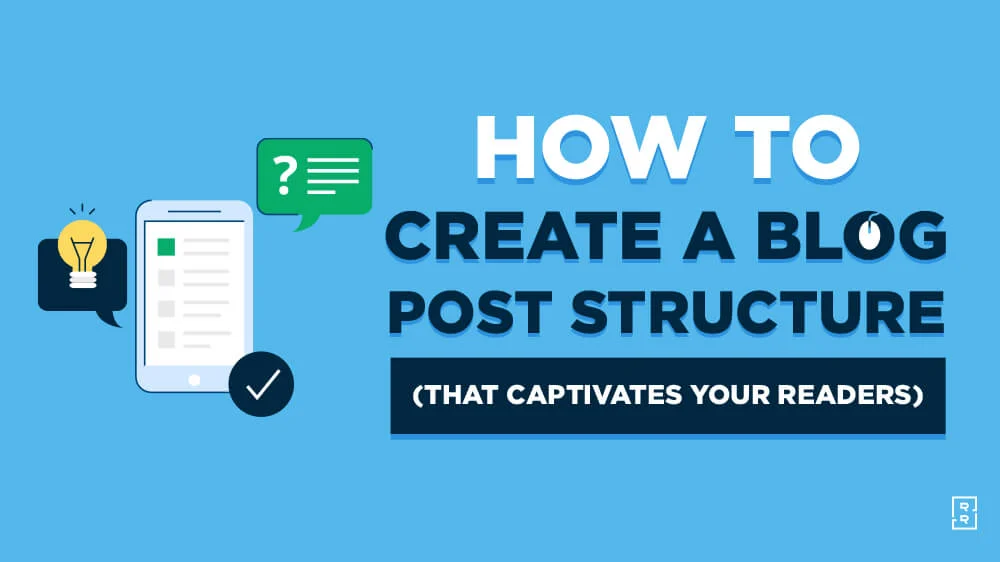
 Uncategorized3 years ago
Uncategorized3 years agoHow can I write a well-structured blog post?
-
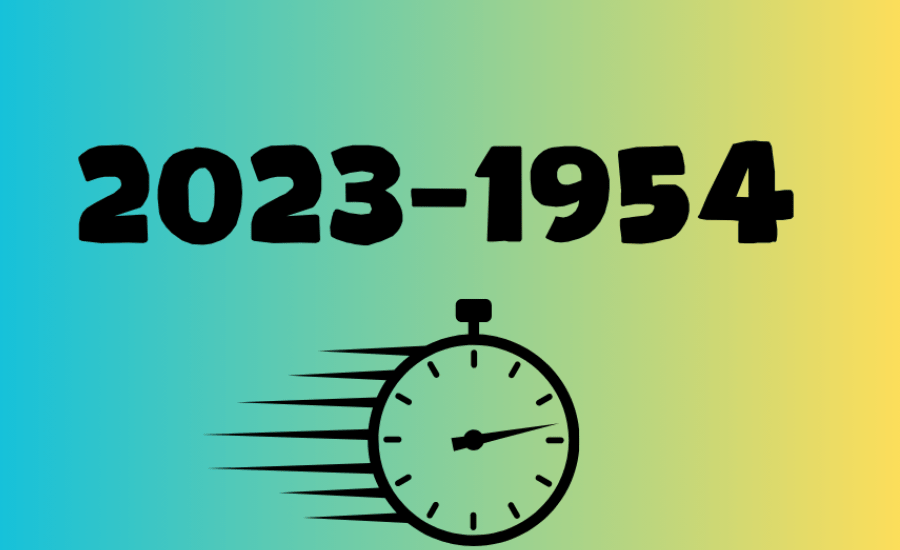
 Technology12 months ago
Technology12 months agoImagine a World Transformed by Technology and Innovation of 2023-1954






